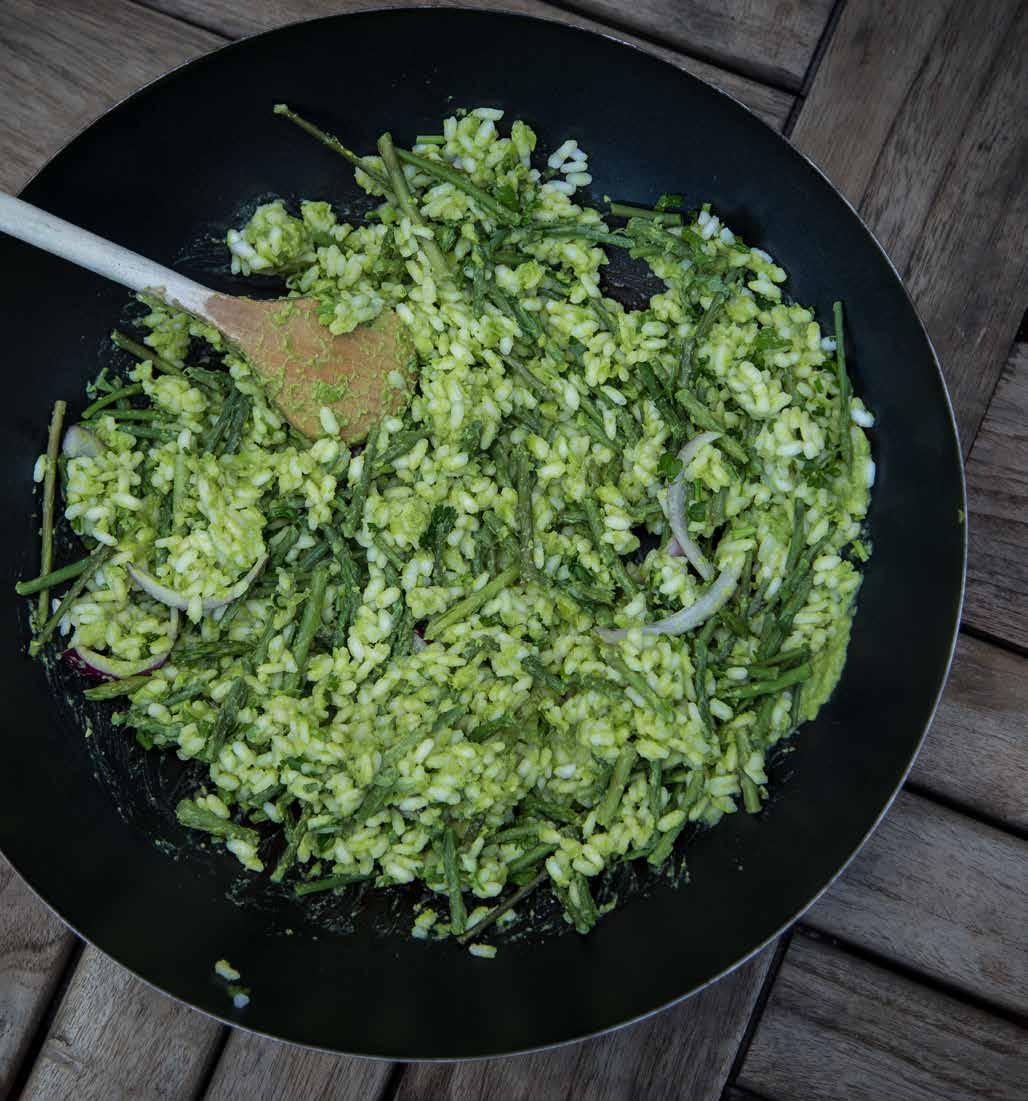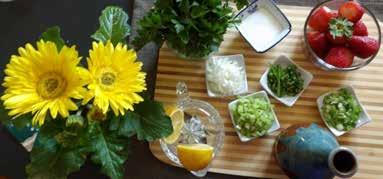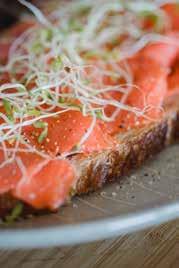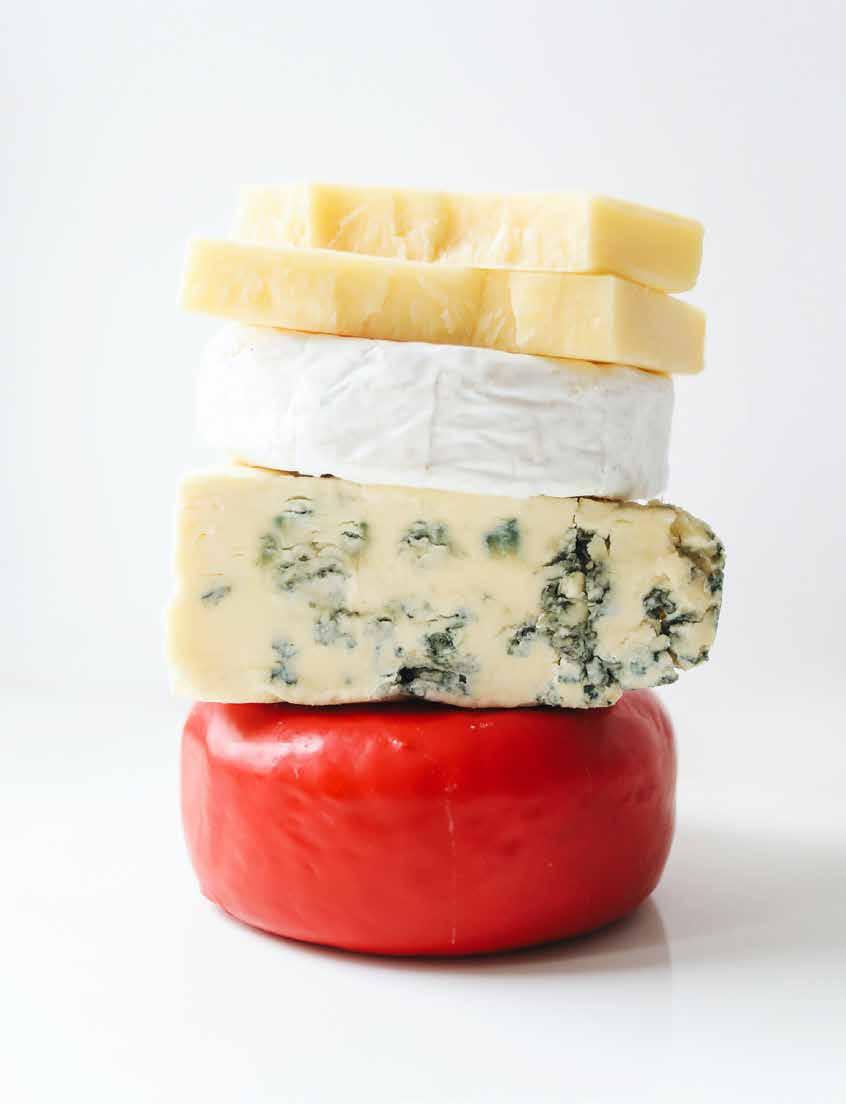For






For





Producer & Editor-in-Chief
Chief Financial Officer
Pat Friedman
Cindy Smith, mma, mba
Creative/Marketing/IT Director Todd Alcock
Culinary Expert & Private Chef
Pastry & Baking Expert
Staff Illustrator
Advertising/Social Media Coordinator
Jim Desmond
Kathy Vazquez-Pond
Mary Jane Lawal/Fils-AimÉ
TBA
Web Developer BixbeeMedia.com
European Counterpart
Cookbook Author/Teacher
Tatjana KeziĆ
Todd Alcock
Coffee Klatch Contributor/Editor
Jim Desmond Latin/California
Michelle Dolley Duck Farm
Ruth Estabrook Baker’s Nook
Mary Jane Lawal/Fils-AimÉ Haiti
Tatjana KeziĆ Croatia
Amanda Russell
Lead Gardening Contributor

Vay Ly, Owner-Chef Vietnam
Pat Friedman Scandinavia, United States
Whit Ford SCORE Southern Maine Mentor
Sarah Guerette Director of the Women’s Business Center at Coastal Enterprises, Inc. (CEI)
Nick Rimsa Owner of Tortoise Labs tortoiselabs.com
Welcome to Life Recipe Magazine, the new, quarterly and seasonal sensation that is poised to sweep America and Europe. The concept hit me like a ton of bricks, while I was returning to the States this winter, from having spent several months working and healing in wonderful Croatia following my husband’s death.
It just made sense: I’d been publishing magazine articles for decades, having had scads of cheff’ing and business experience, and living a notoriously adventurous/outdoorsy/natural lifestyle. Thus, the 3-legged stool of this unique publication: Food. Culture. Clean Living.

I spent the last long months of immeasurable hours, sweat equity and personal financing; of researching, pre-planning, visualizing, creating, developing, hiring experts, mobilizing worldwide chefs, and finally: designing, building and launching this jam-packed gift for you. And this first issue is FREE!
It has been a labor of love, courage and sheer terror, not necessarily in that order. My Contributors, Crew, Advisors, and many amazing real-life influencers have helped breathe life into Life Recipe Magazine.
Since my son Max was born 22 years ago, he and I kept a special tradition: we celebrated the first day of every season. Without fail. This started when he was just a couple weeks old, in a papoose on my back, picking apples and pears in fragrant, hazy orchards.
While he was growing up, I became a Maine K-8 Certified Teacher with Highly Qualified Status, busy publishing but also teaching, volunteering, serving as the chair of the school board, chaperoning scores of field trips… Then one day, as a 3rd grade literacy aide, I happened to have Max in my group. They had previously learned to write their first essay, and I helped the little budding writers to edit them. Max’s was titled, “Celebrating the Seasons.” He wrote about our celebratory tradition being so special to us, even going for milkshakes and greenhouses — on the first day of winter — pretending it was summer.
But his last paragraph is what bowled me over: “When I am an old man and my parents are long gone, I will always celebrate the first day of every season.” Did I cry?’ Hello?! Waterworks!
Now, Max remains successful in college and his stellar full-time career in Rhode Island. So I hand over this new creation, Life Recipe Enterprises, LLC. In the spirit of Max and our innumerable, extraordinary times together, this magazine will be issued on the first day of every season, as often as is humanly possible.
Here’s a vehicle for you to peer into global culture and share those stories and flavors with your peeps. It’s never too late to start your own traditions. Bon appétit!
6

MEXICO
Top San Diegan chef Jim’s gift to you. Authentic and delicious. In a word, Shazaam! He never ceases to amaze.
8 CROATIA
A classic Croatian favorite: Risotto! Perfectly crafted for the season.
VIETNAM
12
THE BEE’S KNEES
20
The birds & the bees, symbols of life, but the plight of these bees?
22
Grilled squid need not be feared, just pressed a bit. “Viet Nam” translates to “people to the south.”
14
18
DUCK, DUCK, GOOSE! Ever wonder about an official duck and/or goose farm(s)?
MOCKTAIL BAR
24
HAITI
Firsthand recipes from the fist country in the western hemisphere to abolish slavery.
UNITED STATES
This Loaded Chicken Salad, woven with a strand of wellness in mind, is high on taste, low on calories.
SUMMER ON A STICK
25
An organic, international, seasonal, grilled recipe bringing berry and bbq together.
26 SCANDINAVIA
Versatile & fresh like the people who live here. It’s a simple-dimple-not-quite-a-pickle salad.
28
30
31
Be hip. Be hype. Follow LRM’s trend-setting mixology.
STRAWBERRY SALSA
It’s a little naughty, a little nice — the way salsa should be.
BAKERY
A healthy sweet tooth recipe. And gluten-free? Bring it.
COFFEE KLATCH
Make your coffee “very much better more good.”
GARDEN OF YOUth
34
A nostalgic essay about eating strawberry shortcakes for dinner!

This colorful, nutrient-dense, and fulfilling salad is chock-full of superfood ingredients, most of which have been literally rooted in Mexico. Fortunately, these ingredients are readily available to most of us here in the states year-round. The herbaceous, creamy avocado vinaigrette is a great source of monounsaturated fats and is rich in vitamins and minerals. The same can be said for the pepitas which have been eaten in Mexico as far back as ancient Aztec times. They add a great nuttiness and crunchy texture as do the crispy blue corn tortilla strips; another Mexican staple full of antioxidants. Sweet red bell peppers, the healthiest of this fruit, are also packed with vitamins, especially vitamin C. Speaking of sweet fruit, mango not only adds balance to this salad but packs in even more health benefits. Finally, if you’re a fan of dairy and its wholesomeness, top it all off with a sprinkling of crumbled queso fresco, or any other tangy, soft cheese. Muy Bien!

5 oz baby lettuces, washed
1 red bell pepper, diced small
1 ripe mango, diced small
2 oz pepitas, roasted
2–3 oz queso fresco, crumbled (optional)
Blue corn tortillas, julienned, fried, and lightly salted, (or a handful of crushed tortilla chips)
1 Hass avocado, ripe
1 bunch cilantro, washed and large stems removed
1 clove of garlic, peeled
½ jalapeño, seeded (optional)
Juice of 3 limes
¾ cup extra virgin olive oil
Salt and pepper to taste
Water (optional)
METHOD :: servings 4 ::
Make the vinaigrette by placing avocado, cilantro, garlic, jalapeño, lime juice, oil, and salt and pepper into a blender. Blend until all ingredients are well combined, scraping the sides of the blender as needed. Add water, a little at a time, while blending if a thinner consistency is preferred. Adjust seasoning as necessary. Place in the refrigerator until ready to use, (up to 2 weeks in an airtight container).
Place baby lettuces in a large mixing bowl. Just before serving, drizzle enough of the vinaigrette to lightly coat the greens and gently toss. Divide the dressed lettuce into 4 salad bowls. Equally garnish each salad with mango, bell pepper, pepitas, tortilla strips, and queso fresco (if using).
Enjoy!
Born and raised in New York, Chef Jim grew up helping in his family’s delicatessen, and at an early age, began his career in the restaurant industry washing dishes and peeling vegetables. Eventually, his experience earned him a cook position on a Hawaiian Islands cruise ship. After several years of preparing meals for hundreds of guests, he felt the need to serve his country and enlisted in the U.S. Coast Guard. Chef Jim prepared and served countless meals on land and at sea for admirals, dignitaries, and crew members while he dedicated over 12 years of active-duty service. His creative mindset and passion for food then drew him to the Art Institute of California, Orange County, where he graduated with honors, obtaining his degree in Culinary Arts.
Chef Jim spent the last seven years perfecting his culinary technique by working as a private chef and high-profile event caterer throughout Southern California. His comprehensive knowledge of local, and international cuisine, paired with his lifelong passion for pleasing people with amazing food is what makes him the culinary pro he is today.




Risotto with green peas and wild asparagus is regularly on my menu for Saturday lunch. After Saturday morning’s coffee at the Riva (waterfront), I always pass through the green market and come home with “tonnes” of fragrant, fresh vegetables.
With such a “vitamin bomb,” it’s easy to get inspired. This simple and quick meal is fabulously low in fat and also suitable for vegans.
Who can resist?
300g rice
1 big bunch of wild asparagus
300g green peas
1 big violet onion
4–5 Tbls olive oil
As much basil or parsley as you want, chopped Salt and petter to taste
METHOD :: servings 4 ::
1. Cook the green peas and wild asparagus separately. Drain, but do not throw out the water. Keep it aside in a dish.

2. Then with a hand mixer, mix the green peas beans and 2tbsps of olive oil together into a smooth mousse. Add 1/3 of the chopped asparagus and a little bit of the leftover cooking water, and mix it again until it’s smooth. Add salt and pepper and put it aside.

3. Heat the rest of the olive oil in a large saucepan, add sliced onion, and stir until soft.
4. Add washed rice and stir until all the rice is covered with oil. Turn down the heat to medium and slowly pour water over the rice (again using the leftover water).
5. Once the rice is cooked, add the green mousse and stir it all together gently.
6. Finally, add the rest of the chopped asparagus and chopped basil.
The rice soaks up the green mousse flavor and the wild asparagus adds a final touch to this yummy risotto.
HINT: You can serve it with rocket salad, making it a great detox lunch and a huge benefit for your body.
To me, cooking represents a trip into a world of imagination, a journey to another dimension where time doesn’t exist. Almost like a game, I harmonize flavours and aromas, colours and textures — balancing, improvising, going overboard, breaking rules…
It’s a step away from everyday life. A process that changes minute by minute. A world away from my main profession as an economist. All that cooking raises levels of oxytocin, the love hormone. How can I resist?
I was born in Karlovac (northern Croatian) and studied Economics at the University of Zagreb. Love led me to Split and freed up a new energy from within, as with every one of the many travels I have been on with my husband where I got to try new flavours and aromas, learn new recipes and integrate them into my own everyday cooking.
 —Tatjana KeziĆ, Cookbook Author, Culinary Teacher & Recipe Blogger Blog: platesnplanes.com
—Tatjana KeziĆ, Cookbook Author, Culinary Teacher & Recipe Blogger Blog: platesnplanes.com
• Instagram: @plates_planes
Croatia is quite likely one of the most misunderstood hidden gems in Europe, and perhaps the world. Since Croatians won their independence from communist Yugoslavia in 1984, which bear in mind is nearly 30 years ago, Croatia has been an overwhelmingly peaceful and fantastic society, which took me into its embrace when I suddenly became a widow last spring and moved to Split, Croatia for a spell.
Croatian people are incredibly loyal, attractive, proud, industrious, family oriented, in sync with one another/their sense of place/the earth around them, and all inhabitants. No wonder countless expats and visitors flock from all over Europe and the globe.
The magical, turquoise finger called the Adriatic Sea, is all that separates this Slavic nation from Italy. The Adriatic is the northernmost tip of the Mediterranean Sea. And it is exquisite. Swimming here, which I did extensively, twice a day for nearly six months, was one of the most healing experiences in my life, and since my most recent spine surgery. Still, I must’ve walked a thousand exhilarating miles here.

The food is Mediterranean-based, healthy, simple, satisfying, and steeped in olive oil — some of the best in the world. (Olive trees are everywhere here and will be discussed in greater detail in the fall issue.) Fresh fish is the word. Amazing grilled seabass and endless local delicacies from the sea or the land are never taken for granted here.
This stunningly preserved history is thousands of years old. Incredible varieties of shops, cafés and hip boutiques are all tucked in and around the ancient yet beautifully preserved palace walls that take up much of the Old Town in Split. (Dubrovnik, where Game of Thrones was filmed, has a very similar vibe, from the viewpoint of one American; in that: both cities stretch magnificently along the seaside with sparkling city features, ancient palaces, a hot art scene, fabulous restaurants and “coffee bars” on nearly every corner.)

It’s a safe place. There’s no gun violence, no identity theft, no pedophiles, no violent crimes… children play outside after dark. A stray animal is given a home. The men of all ages sing aloud, sweetly and proudly. It’s that certain tough honesty about Croatians that intrigues me most.




Never boring to watch the boats coming to and from the thousands of staggeringly gorgeous Adriatic Islands. Living in Split, Croatia for a time last year was the most impactful and transformative experience of my life. I cannot wait to return. It will always be my home away from home, and in future issues of Life Recipe Magazine, you will see and learn more about Croatia and its countless wonders.
 Photo: Pat Friedman
Sipping an ancient homemade olive elixir on the Adriatic island of Brac with my sister Barb Desmond-Rader
Ivica Profaca, tour guide, Split, Croatia facebook.com/ivica.profaca
Mato Perajica, Top Guide & Transport Services privatedriverguideincroatia.com
Photo: Pat Friedman
Sipping an ancient homemade olive elixir on the Adriatic island of Brac with my sister Barb Desmond-Rader
Ivica Profaca, tour guide, Split, Croatia facebook.com/ivica.profaca
Mato Perajica, Top Guide & Transport Services privatedriverguideincroatia.com


This is a perfect dish for friends who visit for lunch. Super fresh, light, and elegant; this unbelievably easy-to-make, and gorgeous sensation will always impress your guests.
It’s so vibrant, beautifully balanced, and healthy — just like Vietnamese cooking defined.

Serve with a light and bubbly beverage.
1 large fresh squid, cleaned and whole. Do not marinate or pre-cook.
½ cup lotus root, julienned (surprisingly, you can find lotus root in most major supermarkets these days)

1 cup red cabbage, shredded about the width of the julienned lotus.
2 cups green cabbage, shredded more finely
1 cucumber, peeled and cored
1 carrot, julienned
1 small onion, julienned
2 Tbls fresh rau răm (Laksa leaf): Fine to replace with and/or combine with fresh basil, coriander and mint leaves.
2 Tbls minced garlic
1 Tbls fish sauce — no American refrigerator should be without a bottle of good fish sauce!
METHOD :: servings 2 ::
Toss veggies and herbs together briefly — just enough to blend them in this light dressing: equal parts water, sugar, rice vinegar (and/or lime juice), and then fish sauce. Taste & adjust if needed.
Pile salad high in the center of a platter. Flatten a place on the center for the squid.
Gently score the squid into thin, even, vertical lines.
Lay it on a heated grill or oiled pan until it just begins curling; then flip and flatten it from curling. It only takes a minute or so on each side for this stunning golden char on the outside.
Then grill a few tentacles.
Right away, brush all the squid in this prepared light dressing: the minced garlic, minced lemongrass, and honey.
Sprinkle the squid with some fresh ground peanuts and if desired, a smattering of french-fried onions.
Garnish with fresh herb leaves and serve promptly.
Viet Nam is very hot and humid in the summer; I remember that, as a young girl we enjoyed seasonal favorites like green papaya dishes, lots of vegetables, besides so much amazing seafood. I recall going down to the beachside, drinking ice coffee under the moonlight. I grew up near Halong Bay, and I will never forget the exquisite Blue Sea in front of my house.” As a hobby, I enjoy digging for razor clams (like these in the photo), and cooking for and spending time with my family.
—Vay Ly, Owner-Chef

Haitian food dominated our kitchen mostly because my father’s people were constantly going back and forth to Haiti bringing with them necessary ingredients to prepare loved dishes. Thankfully these are ingredients that are readily found in most supermarkets in the United States these days. My parents were very involved in raising my own five children who also grew up on Haitian food. My parents are no longer with us, but their life lessons and a steamy pot of rice and beans are still on the table.)

3 lbs pork shoulder, cubed
2 habanero peppers cut into 2 or 3 pieces to release flavor (use gloves, the juice from these can burn your hands)
1 small onion, minced
1 bottle of lemon juice (can replace or combine with lime juice and/or sour orange juice)
1 tsp salt
½ tsp pepper
½ tsp of powdered garlic
½ cup cooking oil
4 or 5 habanero peppers, rainbow colors are nice but not required *
1 celery stalk, chopped into small half-moons
1 carrot, chopped
1 small onion, chopped
¼ of a small cabbage, roughly shredded
1 bottle of white vinegar
½ tsp salt
¼ tsp pepper
¼ tsp garlic
Glass jars
METHOD :: servings 4 ::
Combine all ingredients except oil to make a marinade. Cover the pork completely in the marinade. Marinade at least six (6) hours.
Drain pork from the marinade.
Add cooking oil to a nonstick skillet on a medium flame and fry the cubes of pork until crispy. You can put a piece of the habanero pepper in the oil while frying. If you like hot food, this will do the trick.
Drain, let rest, and serve with classic Haitian sides (shown above).

* Remember to wear gloves when handling, as these peppers can burn your hands. If you cut them they will add the heat to your pikliz quicker.
Habaneros can be left whole or cut in half. Place everything into the jar and add spices and vinegar. Store in the refrigerator. Can be left on the countertop but the colors won’t stay as vibrant.

Add pikliz to soups, salads, and of course — on top of Griot.
I was born in Brooklyn, New York, to a Haitian immigrant father, Alix Fils-Aimé, and 2nd generation Bajan mother, Mary Jane Fils-Aimé. I’m the 4th of 5 children. I work as a phlebotomist in a small nonprofit hospital in Pennsylvania. I recently started nursing school. I spent a large part of my life working with my family in our silk screen factory. I worked alongside my father as an artist and I am very passionate regarding my artistic endeavors. I spend countless hours painting and doing all sorts of projects not limited to canvas. Beading jewelry and pouring candles were all heavily influenced by my parents who were both artists. With Caribbean pull coming from both of my parents, my upbringing was impacted by their art, music, lifestyles, and of course food!



With 11 million people walking softly here on the Earth, speaking French and Creole (current estimates value Creole at greater than 90%), the beautiful Haitian society is one of incredible tenacity and endurance. Having been long bereft by governments, massive natural disasters, widespread deforestation for charcoal, and other crises, it remains the poorest country in the Western world. But Haitian citizens are not “poor.”
Editor’s Note: When this Editor was a child growing up, as the best friend of this issue’s Haitian recipes contributor, hers/the Fils-Aimé family took me under their wing. From grade school beyond college. They had a big family, foster kids, foster pets, friends, and relatives constantly in and out. It was a scene of ceaseless activity and happiness. They ran a busy silkscreen company — and with all those mouths to feed they sometimes didn’t have much; but somehow there was always a big, fragrant pot of the rice-n-beans on the stove, a roasted turkey on a platter that would be picked upon gratefully throughout the day, along with classic Haitian and American dishes. The Fils-Aimé’s served up more music, unconditional love, and belly-laughs than in any household I’ve known. And that, to me, is being rich.

6 cups water/broth
3 cups long grain white rice
2 habanero peppers
1 medium onion, diced
½ lb red kidney beans
½ lb bacon
2 bullion cubes
½ tsp fresh chopped garlic
1 tsp salt
½ tsp black pepper
METHOD
:: servings 10–12 ::

Boil kidney beans in water with whole habaneros, bouillon cubes, salt, pepper, and garlic. This broth is what your rice will ultimately taste like, so you want to make sure the spices are to your liking. Keep the broth, beans, and peppers to cook the rice in when done. You will need 6 cups to make your rice so be sure to make enough broth.
Chop the bacon into small pieces and fry in the pot that you plan on cooking the rice in. When bacon is beginning to get crispy, add diced onion.
Once the onion starts to look translucent, add your beans and 6 cups of broth, not water.
Bring to a boil and add rice. Cover and cook medium-low until rice is tender. Add more broth for wet rice, less for drier rice.



Who doesn’t love to dish up simple, yet robust and wow-factor meals? I just make sure there’s always a healthy bent. Being a four-season outdoor girl, it just makes sense.
Creamy and fulfilling, yet elegant and provocative. This dairy-free-optional recipe takes the humdrum out of chicken salad, and the calories out of classic loaded potatoes. A simple blend of French Fines Herbes with Greek yogurt offers European gifts to this surprising marriage of two American darlings.
Bacon lovers: crunchy bits of the pork persuasion are welcome here, or they can be convincingly swapped for turkey bacon, vegan bacon (baked strips of fermented soy), or even crispy-fried chopped shallots in oil & salt. And if your yen is for speckling flecks of cheddar in loaded spuds, fold some in, as do I. Dairy-free cheese alternatives abound; or substitute here with shredded carrot, complementing the colorful elements throughout the dish.
2 cups chicken, shredded
3 slices bacon bits or ¼ cup replacement
3 rounded Tbls of plain Greek yogurt
3 rounded Tbls of mayonnaise (most major brands are dairy-free)
²⁄³ cups shredded Cheddar, dairy-free cheese or shredded carrots
Carrot shavings for the greens
¹⁄³ cup chives, sliced very thinly on the diagonal
¹⁄³ cup shallots or red onion, minced
Field mix
½ cup tri-colored peppers, minced
Fines Herbes: equal parts (2 Tbls each) chives, parsley, chervil (if available), and a hint of tarragon.
No fresh herbs? No problem. Dried herbs work well but with some less flavor.
½ fresh lemon
Kosher salt & cracked peppercorn to taste
Paprika for light, smoky dusting. Or cayenne pepper for a touch of heat.
METHOD :: servings 4 ::
Shred chicken with care.
In a large, separate bowl: blend yogurt, mayo, shallots, the finely chopped herbs, salt and pepper to taste. (More sodium is found in some ingredients here.)
Fold chicken into the herbed yogurt mix and refrigerate for an hour or more, to tenderize the meat and bloom the flavors.
Meanwhile, cook bacon or alternate choice until crisp. Drain and cool. Break into nickel-size bits.
Into the bowl — following a gentle stir to incorporate any liquid — add the bacon, half of the chives, shredded cheese and/or carrots until just blended.
Serve generously atop an organic field mix that has been playfully dotted with the peppers.
For a bright pop, hit the top of the salad with a light, even mist of fresh lemon juice, rather than mixing it in.
Dust over very modestly with the paprika.
Top with a smattering of the chives, reserving the last of them to casually accent the plate.
For 30 years, Pat Friedman has been a widely published travel/environmental writer, organic gardener, and explorer of hidden coves and mountain trails around New England.
Born into her family’s New York deli, she started up and operated a large organic cafe’ & arts mecca, and in her spare time has been a head chef for her community’s soup kitchen (where she’s a.k.a.
“The Singing Chef”) — transcending farmers market bounty into succulent, nutritious and memorable meals that just make people feel good.

The birds and the bees; the very symbols of life itself. But the plight of bees: these amazing creatures necessary for much life up the food chain, has become the plight of humanity’s future of food insecurity — and survival. Rather than to bog this down with dismal facts, we can all agree that the world is better off with bees. Everyone can plant local plants, on patios or pastoral estates, which support all our pollinators. Please do! Honey remains the only known food that has all the ingredients needed to keep us alive. Let’s do what we can to keep these bees alive and to thrive!
Spanish cave drawings dating back 15,000 years show humans removing bee honey from honeycombs. But the first flowering plants appeared on Earth about 130 million years ago, and a three million year old fossilized honeycomb has been discovered.
Honey is the only natural product on the planet which is completely immune to a cold virus or bacteria that is directly set upon it in a laboratory petri dish. Honey is sort of magical in the ultimate superfood kind of way. It is not just antibacterial. It’s used for a litany of home health remedies, tried and true, even helping human brain health.
Honey comes in many forms: there’s culinary and medicinal, darker and lighter, stronger and more subtle, processed or raw. Not all honey is made by bees. Since Mexico is featured in this issue, it’s worth mentioning that Mexican honey wasps produce honey on a large scale. This species has also been making honey for millions of years.

One pound of honey requires bees to visit two million flowers and to fly about 55,000 miles. So they do need their own honey to survive as well. They work tirelessly to make tons of it for our needs, and even more for the busy worker bees. When it’s cold, they cluster around the Queen and shiver madly to create heat in the hive. Obviously, that burns calories, so honey is perfect for their high energy needs, like ours.

A teaspoon of honey is approximately 3.5 on the glycemic index. Whereas the same amount of sugar is 65 on the glycemic index. Time to start replacing processed sugar where appropriate. One cup of sugar equals ½ to ¾ cup of honey. Follow adjustments accordingly.
And BEE HAPPY!





Poached eggs on wild rice with a side of greens. My son liked a big goose egg but two duck eggs are my favorite. Duck eggs are great for poaching as they have a creamy, rich yolk and firm albumen. Spinach is my favorite green but any green will work. It’s a great start to the day and helps you feel alert and productive, especially following a morning workout.
Sunday Quiche. For the crust — almost a cup of flour, salt to taste, almost a stick of cold butter, and ice water.
Mix the salt into the flour, blend in the butter with a pastry blend, stir in the ice water until just wet enough to roll out, and press into a large, deep pie dish. (Or use your own favorite crust recipe.)
For the filling — one large leek, a medium stalk of broccoli, Swiss and Romano (or other salty Italian) cheese to taste, 2 goose eggs or 7 duck eggs, 1.5 cups of whole milk, salt and pepper.
Prepare the vegetables as follows: Cut off the thick, dark green ends of the leek. Insert a sharp knife just above the root and cut all the way to the tip of the leek. Insert knife again at a 90-degree angle to the first cut, and cut all the way to the tip of the leek. Rinse thoroughly to get all the dirt out. Remove broccoli stem and wash the broccoli.
Finely chop the vegetables and put into an uncooked pie shell. Shred the cheese (go easy on the Romano) and mix in with the vegetables. The cheese and vegetables should almost fill the pie shell. Add salt and pepper to taste.
In a blender, mix eggs and milk until well blended and a froth starts to form. Pour over the vegetable/cheese mixture. Cook at 375° on a low rack until a knife inserted 1 inch from center comes out clean.
Substitutions — veggies or cheese can be substituted. Sometimes I will use whatever vegetables and cheeses are in my fridge to empty it out. Herbs also make a delicious and flavorful addition.
Goose egg French toast. 1 goose egg or three duck eggs, 1–1.5 cups whole milk, 1 tsp vanilla, freshly ground nutmeg, oatmeal bread, fresh fruit, Maine-made maple syrup.
Heat up a griddle. Scramble the egg, and mix in the milk and vanilla. Dip slices of bread into the batter and cook on a buttered griddle. Sprinkle with nutmeg. Once the bread is toasted golden brown, flip over and toast the other side. Serve with fresh fruit and maple syrup.

I first read in the New Yorker Magazine, with rapt interest, the growing trend of virgin/alcohol-free bevies which are as upscale and palatable as traditional Mixology marvels. Just without the booze. Everyone knows what to do if they want to “spike the punch.” Here is your portal to the trend-setting Narnia of drinking, The Mocktail Bar, another exclusive feature of Life Recipe Magazine. Let’s toast one another, and hoist one for a peaceful world over — a gesture as international and buoyant as is this standalone publication, our Crew/Contributors, and you, our cherished readers.
½ cup (+/- ) frozen blueberries, preferably wild/ Maine blueberries, but what you can get.
1 cup of lemonade
½ cup of pomegranate juice — with or without juice blends (mine comes with sweet cherry)
½ half cup coconut water or seltzer
2 tsp lemon sorbet
Fresh mint leaves for muddling and for garnish
METHOD :: servings 2 ::
Keep berries frozen until the last minute.
Into a pestle and mortar, or in whichever way your kitchen allows you, roughly muddle/crush together 4-5 mint leaves with the blueberries.
Place the mint/berry mixture at the bottom of two tumblers, divided evenly.
Add the lemonade, pomegranate juice (or other healthy red juice), and coconut water or seltzer.
Stir quickly. Let settle for a few seconds.
Once the mixture has settled, gently top each with a handful of small-medium ice cubes
Spritz the top with a bit of bubbles if desired.
Carefully place a tightly packed teaspoon of sorbet on top.
Add a sprig of fresh mint for garnish and serve immediately. Cheers!

Nothing says summer like firing up the bar-b-que or chomping down on some juicy, ripe watermelon. So why not do both? Grilling the melon results in caramelization for even more sweetness, a hint of smoke, and an amazing presentation. These skewers are a breeze to make for a crowd and are easily customizable. Here, we top them with crumbled feta, chopped pistachio, fresh mint, and a drizzle of local honey but goat cheese and a little balsamic glaze would also taste delicious.
Watermelons are actually berries that are high in lycopene and antioxidants and are a good source of vitamin C. Look for a pale-yellow spot where the fruit rested on the ground, indicating ripeness. Tap the watermelon and listen for a deep, hollow sound. This means it is juicy and at the peak of its ripeness.
20 (2-inch cubed) pieces of watermelon, rind removed
1–2 oz feta cheese, crumbled
1–2 oz pistachios, shelled, roughly chopped
1–2 Tbls honey
1 bunch mint leaves, washed, stems removed, sliced into a fine chiffonade
12 wooden or bamboo skewers, soaked in water
METHOD :: servings 4 ::
Start by covering some wooden or bamboo skewers with water. Allow them to soak for at least 30 minutes, this will prevent the wood from burning.
Wash and dry the watermelon, then place it on a cutting board. Using a large, sharp knife, cut the melon into about 2-inch cubes. (If you’re into no waste, and canning, go ahead and reserve the rind for pickling).

Pierce 3 or more pieces of the cubed watermelon onto each skewer then place on a sheet pan and set aside.
Preheat your grill to high heat. Once hot, place the skewers on the grill, then turn after about 1 minute until lightly caramelized on all sides. Remove from the grill and let cool.
Arrange the grilled, watermelon skewers on a platter then top with crumbled feta, chopped pistachios, a drizzle of honey, and mint.
Enjoy!
 Photos and Recipe by Jim Desmond
Photos and Recipe by Jim Desmond

Scandinavian cucumber salad, it never goes out of style. While it’s true that the versatile and fresh cucumber has made its way into similar and rewarding summer salads around the world, perhaps no region is more famed than Scandinavia for this unspeakably simple and imperative salad.
½ cup your choice vinegar (plain white vinegar is fine)
2 Tbls water
½ Tbls salt
3 Tbls sweetener
¼ tsp fresh dill
1 shallot, sliced as thinly as a narrow escape!
2 medium size cucumbers sliced very thinly. (If they are seeded then slice in half first and remove the seeds.
1 large pot filled ½ way with very hot water
1 large bowl filled ½ way with water and ice cubes
Wash all fresh ingredients, naturally.
Scrub cucumbers lightly, then slice evenly and thinly, while keeping them intact. Take your time to get the slices to be as uniform as possible. It’s simple physics: if the surface areas are the same, the marinade coverage will be too, making it taste, look and feel like a culinary champion made it.
OPTIONAL: Blanche the cucumbers by placing them in a colander, dunking them for a second into a large pot of hot water, then immediately drop them into a prepared, large bowl of ice water for a few seconds.
NOTE: Blanching, though it seems old-fashioned, and is not entirely necessary, it’s a simple technique for many veggies that adds a certain integrity to the vegetable.
Toss the shallot in with the drained cucumbers. In a small bowl, mix together all of the remaining ingredients, and reserve a sprig or two of the dill for garnish.

Serve with a light yet hearty shrimp salad on classic dark rye — and you have yourself a little trip to Norway and neighbors on a plate.
I started working in my parent’s general store — 10 hours a day in the summer — since the age of eight (8). Ran the register, pumped gas, butchered/ground meats, created salads and notably, we catered to a deeply Nordic clientele. This remote Pocono Mountains area, that sleepily hugs the Lackawaxen River, is a.k.a. “Little Norway.” Many Scandinavian folks retire there. The post office was a wall in the back of our general store; a little square opening in the middle revealed “Aunt Ann,” the postmistress. The 300 P.O. boxes indicated the number of families in the tiny town that often swelled with tourists from New York and New Jersey. So my little siblings and I grew up around jars of Scandinavia’s bright lingonberries, steamed fish balls, and other specialties trying to rival the fresh, brining herrings in our cool deli cases.


What do you get when sweet strawberries and spicy peppers go skinny-dipping in a pool of delicious? This easy, wow-factor salsa recipe was invented as I slowly walked down the stairs early one recent, ethereal June morning. Results? Delish. The big question is, do you dip into it with homemade cinnamon-dusted baked pita chips? Drizzle over ice cream? Or serve it as a standout addition to a beautiful piece of grilled fish or meat.
Whenever possible, buy produce in season; local and/ or organic strawberries make all the difference. Or go over the top and grow your own berries, filling a few quarts yourself if your community is lucky enough to have a picking farm. Fun? This recipe shouts summer in a back-flip on freshly mown grass as the fireflies and the porch lights turn on.
1 dozen large or 2 dozen small strawberries.
1 medium celery stalk, minced evenly.
1–2 finely sliced scallions, white and green portions
Half of one small leek, thoroughly rinsed, and sliced into very thin half /half-moons.
1 jalapeño or other favorite salsa pepper, diced or minced, depending on heat level desirability. Same goes for leaving or omitting the seeds, given the seeds increase the heat level.
1 fresh lemon, zested, then cut in half. Then squeezed. DO keep the seeds out of the dish.
2 tsp — after chopped — wide leaf parsley (this is a rare salsa that I’d NOT recommend for cilantro).
½ tsp finely ground salt, like iodized table salt. (This is not a salsa that I would recommend for big chunks of salt overtaking the sweet, gentle strawberry.)
1 tsp oil (light olive, coconut, or grapeseed oil)
Wash and finely chop half of the strawberries; then for contrast in texture, flavor, and appearance, crush the other half of the berries with a pestle and mortar — or the back of a heavy spoon in a bowl. Preserve all juice. Set aside.
When dicing the vegetables and herbs, make sure to remove any strings from the celery, skins from the exterior of the scallions, excess fiber from the inside of the peppers, and of course any soil that may be hiding in the leeks.
In a medium bowl, stir the remaining ingredients. Fold in strawberries and juices. Taste. Season as desired.
NOTE: flavors will bloom best in the fridge for an hour or so.
Garnish with a sprig of parsley, lime, and/or thin pepper strips.
Serve at once.

The first day of summer in Sweden is such a big deal, that their most cherished tradition, is a named holiday called Mid-Summer, a.k.a. “Midsommar,” and it’s on June 24 this year. Whereas the summer solstice is the 21st on other calendars, Swedes celebrate the first day of summer, on the Friday between the 19th and 25th of June every year. (June 24, 2022)
From naturally decorated parks to mystical forests, Swedes the country over flock together, decorating their enchanted surroundings and wreaths of beautiful flowers for the hair to celebrate the onset of summer.

They largely celebrate outdoors at friends’ and family’s garden parties, often gathering in traditional garb. A star of the show is when the young — and young at heart — swirl and sing and dance and laugh around the Maypole — simple grandeur. This ancient celebration always centered around the beauty and mystery of plants.

For this robustly celebrated event, you will see such classics as thinly sliced salmon donning crisp bread, or slices of nut-brown Gjetost cheese, or the beloved cumin and clove flecked Nukkulost cheese, perhaps served with a sip of Sweden’s legendary fermented beverages. So much heritage and hope to toast.

For more information:
https://theculturetrip.com/europe/sweden/articles/a-brief-history-of-swedens-midsummer-festival/

2¾ cup gluten free flour blend (I like King Arthur’s Gluten Free Flour)
1½ tsp baking powder
½ tsp baking soda
½ tsp salt
¹⁄³ cup white sugar
½ tsp nutmeg
¾ cup cold butter, cut into small pieces
½ cup heavy cream
½ cup buttermilk
1 egg
1 cup dried cherries (or other dried fruit), chopped
3 tblspns turbinado sugar

Scones are thought to have been invented in Scotland in the early 1500s and are traditionally baked as a large round loaf and cut into pie-shaped wedges. English scones often have raisins or currents — this variation instead has dried cherries and a touch of nutmeg. The turbinado sugar topping in the recipe below can be replaced with a lemon glaze, made by whisking 1 cup of confectioner’s sugar with the juice of 1 lemon and then drizzling it over the top after the scones have cooled.
Heat the oven to 375° F.
Whisk the dry ingredients together to blend well.
Add the cold butter and cut into the flour with a pastry cutter until butter is pea-sized.
In a small bowl, whisk together the cream, buttermilk, and egg. Pour the liquid mixture over the dry ingredients and mix gently with a wooden spoon until just blended. Add the chopped cherries and stir to incorporate. Use your hands to move the dough around the bowl to pick up the remaining flour. Be careful to not overmix.
Grease a baking sheet. Form the dough into a circle with an 8- or 9-inch diameter. Wet your hands to smooth the surface.
Brush the top with cream, and sprinkle turbinado sugar over the top.
Bake for 20 minutes, then remove from the oven. Cut the circle into 6 or 8 wedges, and gently pull the wedges apart so that the inner edges can brown. Put back in the oven for 8 minutes.
Remove from the oven and cool on a wire rack.
Scones are best served warm, with butter, jam, and a cup of coffee or tea.
When Ruth is not editing math books, she enjoys making gluten-free versions of her favorite baked goods. Diagnosed with Celiac disease in 2008, she has been thrilled to see awareness and availability of gluten-free flours grow exponentially over the years.


Coffee is the third most consumed beverage in the world after water and tea, and it has found its way around the globe. There are different styles, methods, roastings, brewing techniques, and a host of other elements that make up the unique qualities of coffee found in each tucked-away place on Earth. Nearly all cultures have a unique presentation. From the “muddy” Turkish coffee to the raw egg and sugar-infused Sicilian espresso non-alcoholic digestif.
Coffee is personal, like everything culinary, and each person has likes and dislikes. I hope to impart, in future issues of Life Recipe Magazine, insightful, interesting, and new information/techniques to “perk” your interest. For example, never use boiling water for a pour-over brew — the optimal brewing temperature is 202–206 degrees Fahrenheit (some argue the temperature range is 195–205). Brewing with boiling water will produce a bitter result — but you probably already knew this.
We will cover climate and growing regions, water, coffee bean(s), gathering techniques, worker conditions, trade concerns, roasts, packaging, shipping practices, grinds, brewing methods, storage, and along the way, various appliances and methods that may help you make a better cup of kaffee, or kohv, or koohii, or muckadaymashkikiwabu, or qéhvé, or kahawa, or ikhofi, or just coffee!
For me, coffee got its start in college, but it wasn’t until I backpacked five continents and ended up in Seattle (the then coffee capital of the US) that I began to not only appreciate coffee but learn the intricacies like an oenophile.



My mother kept wonderful gardens. There was the corn field up back, along with the squash patch of blue hubbards, another one of russet potatoes, and the kitchen garden with its perfectly straight rows of dependable vegetables that fed her six hungry children. But my favorites — and the favorites of my siblings, too — were my mother’s patches of berries, the true jewels of summer.
The strawberries came first, and we filled our baskets over and over with the enormous red berries, picking every day. All through June, we lived on strawberries: strawberries on our morning cereal that turned the milk pink, strawberry jam slathered over our peanut butter sandwiches at lunch. We even had strawberry shortcake for dinner. We thought we were getting away with something and screamed with delight at the homemade biscuits covered with strawberries and freshly whipped cream.
Next came the raspberries. Braving the inevitable scratches, we reached far into the rows of prickly canes that the delicate berries hung from. They ripened so fast that we picked twice a day, filling small baskets so the fragile berries would not get crushed from under their own weight.

Sometimes after a morning of picking, my mother would set out six bowls — one for each of us — filled with a scoop of vanilla ice cream floating in syrupy raspberry preserves, still warm enough to melt the ice cream ever so slightly.
Finally, the blueberries and blackberries came into season. To pick these, we trekked into the woods and out into the fields. Where the loggers had cut, grew blackberries; where the mowers could not reach, grew blueberries. The fun of the hunt offset the tedium of picking. There was no sneaking a berry now and then into our mouths — it was hard to fill a pail with the tiny, wild blueberries or the hard-to-find blackberries. The blueberries landed in our breakfast pancakes. The blackberries went to tart pies, a taste of the woods right there at the kitchen table.
I don’t know how my mother maintained all of her gardens or how she found the time to jam and preserve and make June’s never-ending strawberry shortcake, let alone bake all those pies. We children picked the berries, but I don’t remember us helping with the upkeep. Even so, something wonderful happened. My mother’s berry patches inspired my own berry patches when I grew up, and when my two boys were little, they, too, screamed with delight at strawberry shortcake for dinner and blueberry pancakes for breakfast.
Now as then, berries remain the jewels of the summer… my summer, every summer.
Amanda Russell loves growing her own food in the organic gardens at her home in Edgecomb, Maine. She has just put in a new strawberry patch that will produce next year and is already looking forward to strawberry shortcake for dinner.

Tell
